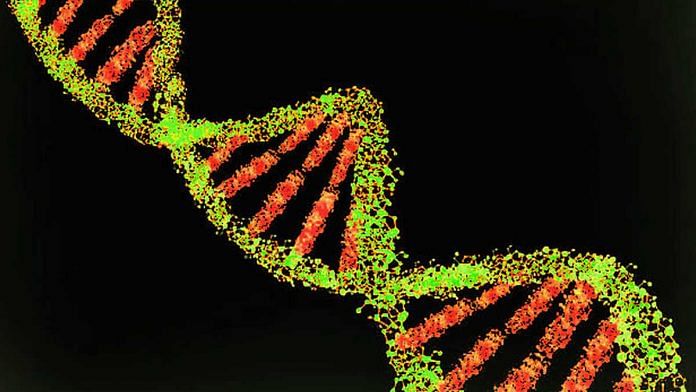New Delhi: A team led by an Indian-origin scientist has made a ‘breakthrough’ discovery that will help predict the risk of developing diseases, such as cancer, diabetes and heart conditions — paving the way for diagnosing them before symptoms appear.
The findings, published in the journal iScience Wednesday, explained why only certain DNA elements from within our vast genome get “switched on” and how they put human beings at risk of diseases.
A genome is an organism’s complete set of DNA. It includes all genes, which house the DNA and chromosomes.
“The findings answer many fundamental biological questions around the function of DNA in health and disease,” said Vijay Tiwari of Queen’s University Belfast, the lead author of the study.
Many diseases occur when there are mutations on a certain part of the DNA strand, known as “enhancer”. Enhancers function as a switch in gene expression and activate the promoter region of a particular gene.
This means certain genetic traits can be “turned on” or “turned off”, shaping an individual’s early development and lifetime health.
Also read: Decades neglecting an ancient disease has triggered a global health alarm, including in India
First-of-its-kind study
The researchers from the university found that enhancer DNA elements have high Propeller Twist (ProT) levels, which is the angle of twisting of two neighbouring DNA bases about their long axis.
The team is the first to discover that high ProT levels make the surface of these enhancer sections on the DNA strands more physically accessible and flexible than its counterparts.
This allows easier access for DNA-binding regulatory proteins. The same properties potentially make these enhancer regions more prone to be affected by mutagenic agents to harm cells and cause certain diseases, such as cancer.
“It is important to understand how a healthy cell develops to be able to decode what goes wrong in diseases. Our study is the first-of-its-kind to provide insight into the role physical DNA features play in the proper development of specific cell types of the body and how their malfunctions may underlie diseases,” Tiwari said in a statement, accessed by ThePrint.
“This could mean we could look at the enhancer section of DNA in any cell of a healthy person and predict their chance of developing disease long before signs and symptoms appear,” he said, adding that many lives could be saved if this tool is used to make earlier and better disease predictions.
Also read: For the first time, India has a genome database. But are we ready to use it?






